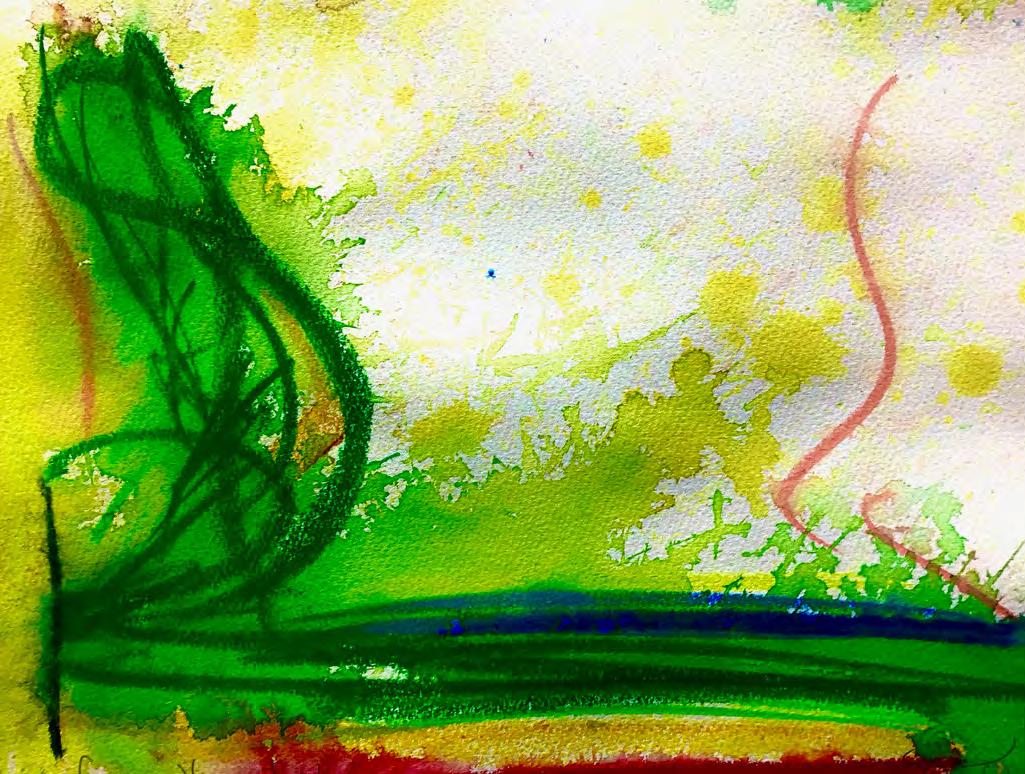Exploring Symbiotic Relationships Between Isolated Settlements and their Surrounding Landscape Samuel Elviss (B1 L6) In the light of our current global situation, most can now relate to the state of being ‘isolated’, and have developed a deeper understanding of its definition: ‘far away from other places, buildings, or people; remote’1 and thus, ‘having minimal contact with others’2. The principal aim of this article is to consider isolated settlements in the world and to try to discover any social, economic or environmental benefits residents are experiencing in their unique surrounding landscapes. Remote societies are often surrounded by ecosystems and landscapes of significance and global exclusivity, which means the local community can reap tourism’s economic benefits. Cape York, in the most northern part of Australia, is a peninsula owned by five indigenous communities who manage its tourism industry3. The remote area receives around 60,000 tourists annually, the Australian government having fostered The Cape York Peninsula and Torres Strait Tourism Action Plan (2008–2011), ‘an important initiative of the State Government’s AUD 48 million, 10-year Queensland Tourist Strategy4. This tourism policy was designed to take advantage of ‘Queensland’s unique natural and cultural assets’5. Naturally, tourism has great potential to provide job opportunities and increased income to indigenous families in a place where these are scarce. Similarly, the remote location of Easter Island’s 900 statues has approximately 7,750 residents. The economy of the region is hugely dependent on people coming from all round the world to visit the UNESCO World Heritage Site. According to The New York Times, an estimated 100,000 people flock to the island each year and it is seen as the main business activity for the future. Tourism provides multiple positive effects on the local economy as visitors spend money in a stream of businesses, from accommodation to restaurants and travel. With ‘seven hotels and 37 residencies making up a capacity of 833 beds’ in 1997 6, it is clear how locals are making the most of the economic potential of these unique statues. Furthermore, Ittoqqortoormiit is a settlement in the Sermersooq municipality in eastern Greenland. ‘Its population is 345, as of 2020, with local hunters making a living from whale and polar bear hunting for generations, and it remains, up to the present, a significant cultural-economical factor in the area. Income is gained by trading flesh and by-products gathered by hunting families, although these options are seasonal and variable.’7 Also, the settlement is a destination for cruises carrying thousands of tourists wanting to visit to see the Northern Lights and other local natural wonders. Despite sea ice that blocks any ships from docking for nine months out of the year, the closest town in Greenland from Iceland has a steady stream of tourists annually. The locals of this isolated settlement are experiencing multiple economic benefits from businesses related to the surrounding distinctive biome. In addition, locals of remote settlements may profit from the natural resources surrounding them in the often rare ecosystem, such as the soils. ‘The volcanic island of Tristan Da Cunha in the South Atlantic boasts a population of 358 people with only nine different last names’8. The fertile soils means that all Tristanians are farmers, with the long-existing agriculture enterprises being cattle, sheep, and potatoes, plus some vegetables and a little fruit. Volcanic soils are very rich in nutrients and hold water well because of their ash content. This has allowed generations of communities at this remote island to provide for themselves and to produce agricultural yield to sell as the main source of income for many. Coober Pedy, a town in northern South Australia, is known as the ‘opal capital of the world’. The opal gem was first discovered there in 1915, and the opal mining industry continues to sustain the small town of 3,500 people. There are over 70 opal fields, making it the largest opal mining area in the world, and the world’s largest and most expensive opal – valued at $2,500,000 in 1997, the ‘Olympic Australis’, weighing 17,000 carats, 11 inches long – comes from this remote settlement. This specific case study emphasises the extent of the economic gain that remote communities can experience as a result of the natural resource deposits from their biologically and geographically significant surrounding landscape. Moreover, remote landscapes with their unique and globally significant landscapes may provide academic benefits on a worldwide scale. The Kerguelen Islands in the Indian Ocean are a part of the French Southern and Antarctic Lands. Coated by glaciers, the Kerguelen Islands receive rain, sleet or snow 300 days a year. However, there are residents, and these are mainly French researchers. The surrounding landscape has housed, since 1992, the French Centre National d’Etudes Spatiales (CNES), which has ‘operated a satellite and rocket tracking 79
In Time of Lockdown: Reflections on Locks, Lockdown, Isolation

Turn static files into dynamic content formats.
Create a flipbookArticles inside
Issuu converts static files into: digital portfolios, online yearbooks, online catalogs, digital photo albums and more. Sign up and create your flipbook.





































